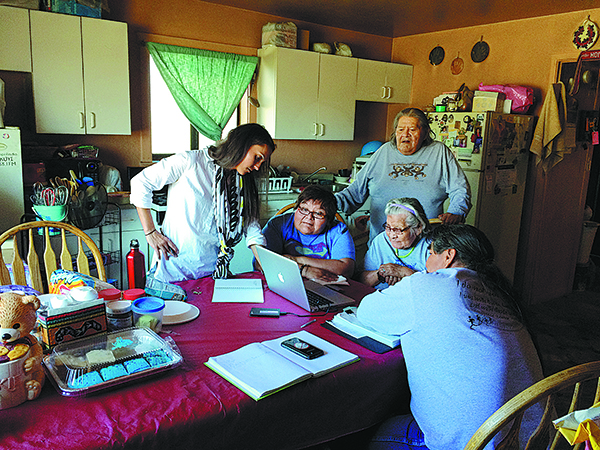Stolen identity
Tens of thousands of Indigenous Americans were sent to boarding schools in an assimilation program one bureaucrat saw as part of 'a final solution of our Indian Problem', Zhao Xu in New York reports.


One group of indigenous girls who "pushed back against this dominant school ideology"-in the words of Jacqueline Emery, author of the book Recovering Native American Writings in the Boarding School Press-were the female editors of Hallaquah, a student newspaper published by Seneca Indian School in Wyandotte, Oklahoma.
Describing the manual work as a distraction from their other duties in an article for the paper, the young women, without explicitly criticizing the schools, were suggesting "they had a higher capacity for intellectualism", Emery says.
In preparation for her book, Emery, an English professor at the State University of New York at Old Westbury, studied 15 newspapers published by Native American boarding schools during the era of intense assimilation between late 1870s and 1930s.
"There had been a tendency to write these off completely as mouthpieces for the program," she says, pointing to the fact that the papers, sometimes strongly censored by the school authorities, were published to serve, first and foremost, a propagandist agenda. (Carlisle, among others, had set up its own printing houses.)
"Now more and more scholars are taking a second look at these newspapers, to see what's actually there," Emery says. "Can we hear students in these pages? My argument is, yes, you can."
Writing in highly accomplished English for Talks and Thoughts of the Hampton Indian Students, published by a boarding school in Hampton, Virginia, were Anna Bender and Elizabeth Bender.
"Together the sisters transcribed and recounted tribal tales, histories and oral traditions," says Emery, who consulted the New York Public Library for the most complete run of the century-old papers, which, in hand, "felt like they are going to literally crumble".
"Subtle gestures" of pride like this one, she says, were used by students to "shape representations of Indianness" and to facilitate "community building", helped by the fact that the newspapers were available in other boarding schools and sometimes even in the reservations-efforts by the authority to keep all students, including potential ones, "in the loop".




































